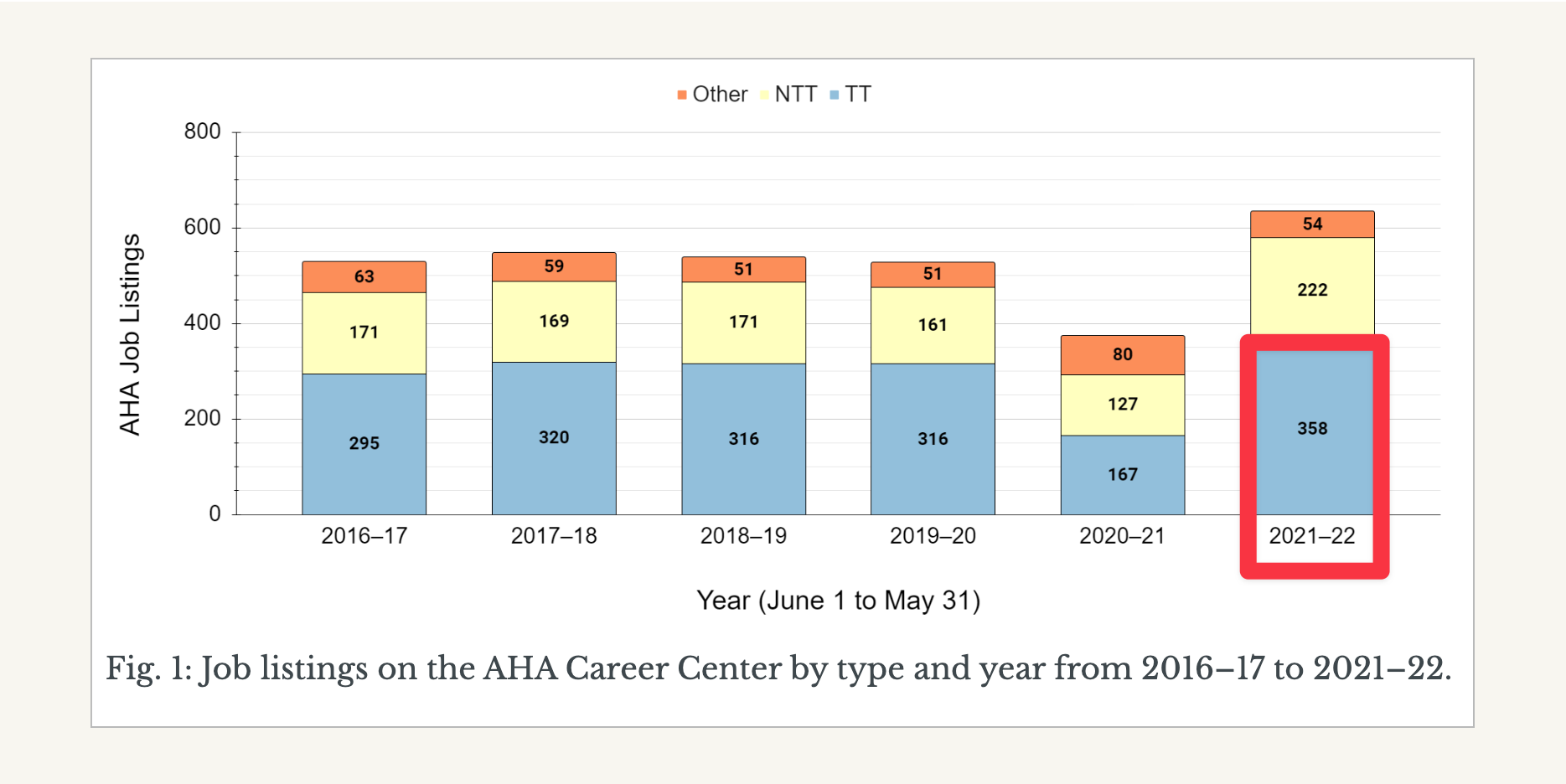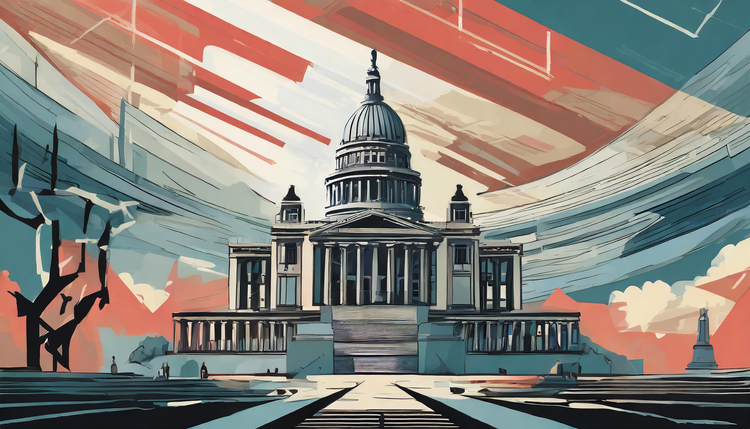The Death of History
Earning a PhD in history is a long, difficult journey. For six to eight years, you are highly skilled, poorly compensated labor for a degree-granting institution (that may, or may not, grant you said degree). To justify such a high cost, the prize of completion must be sufficiently large.
So awaits those who made the nearly decade-long investment? Job hell.
A recent industry survey captured the bleak return on the decade-long investment.
For those who graduated from a PhD program in 2017, 27 percent (231 of 860) were employed in TT positions four years later in 2021. This contrasts starkly with the data from earlier cohorts. Of those who earned their PhDs in 2013, for example, 54 percent (511 of 944) were employed in TT jobs after four years.
Twenty-seven percent. Only one-in-four academic historians were able to find work as, well, an academic historian. The remaining three-out-of-four entered a professional hellscape.
This was not a sudden, COVID-induced collapse. The supply of historians and demand for historians have diverged for many years. Interestingly, demand has remained relatively stable and, since 2016, has averaged 295 tenure-track (TT) positions available annually.

This particular market's giant and growing problem remains entirely on the supply side. Over the same period, ~2016-2019, colleges and universities continue to mint the once-prestigious degree (in orange). Despite hellish prospects for future work, the higher education cartel awards 900-1000 PhD historians per year.

Whether talking high-tops or historians, a surplus exists when S>D. In the market for historians, the surplus is perpetual. Rather than minting fewer PhD historians and thus correcting the oversupply problem, colleges and universities grow the imbalance yearly.
The choice for the average aspiring historian is clear: nearly a decade of indentured servitude in exchange for a seventy-five percent chance of unemployment.
No mas.





